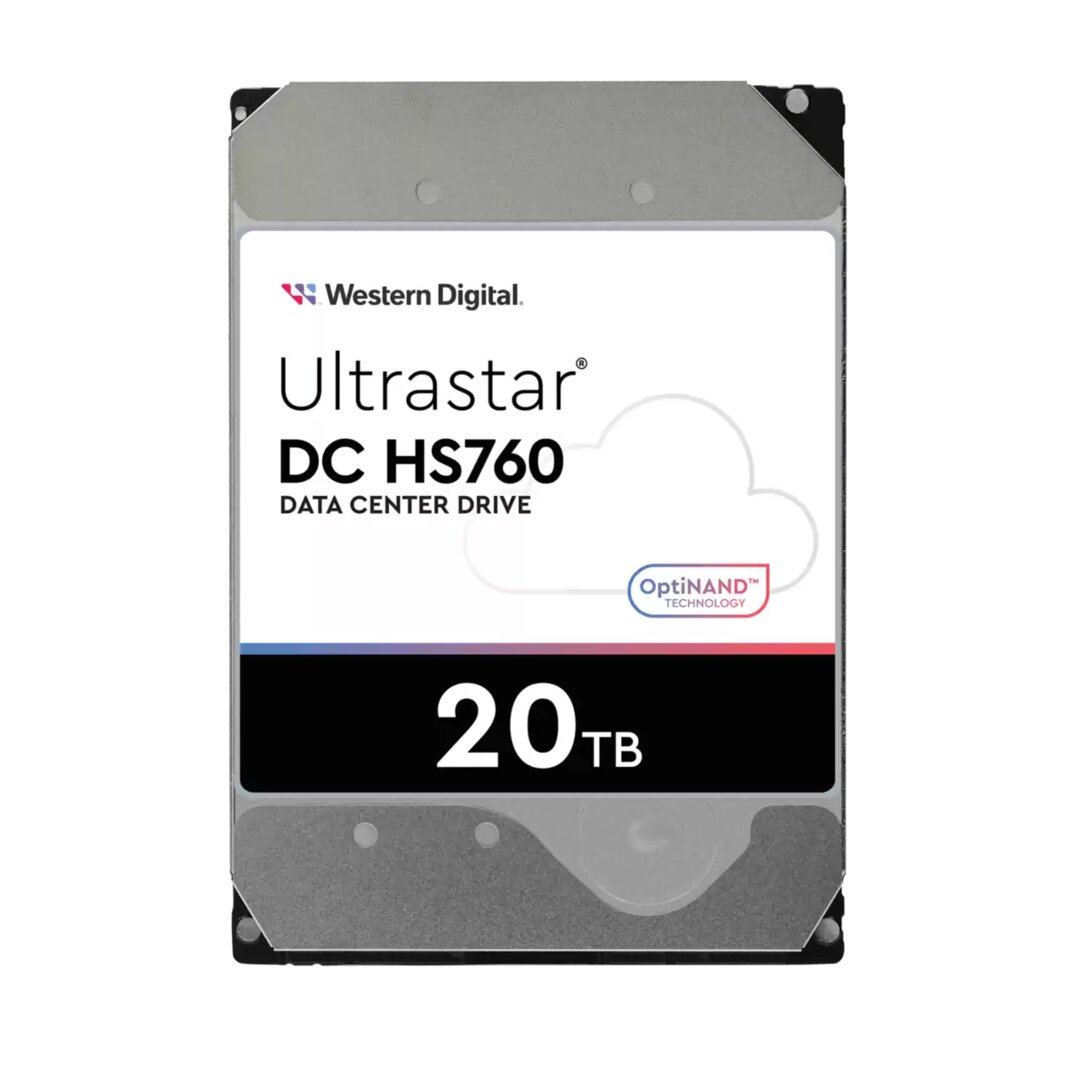After Seagate, Western Digital is also launching a hard drive with dual-actor technology. The actuators, which work separately from each other, almost double the output. Western Digital's debut is the Ultrastar DC HS760 with 20 TB for data centers.
Seagate had shown the way with the dual-actuator technology “Mach.2” and Recently, another model with a double actuator (the translation into German) and 18 TB storage volume was presented with the Exos 2X18.
Ultrastar DC HS760 with dual actuator technology
Western Digital is now following with the Ultrastar DC HS760 that Tom's Hardware spotted on the manufacturer's product pages. Details such as a detailed data sheet are still missing, let alone a public announcement.
But the product page reveals a lot. Thanks to the dual actuator, the Ultrastar DC HS760 should double the sequential data throughput at the top. On this point, Western Digital compares the HDD with the Ultrastar DC HC560, which achieves 291 MB/s. Consequently, 582 MB/s can be expected for the HS760. That would be a little more than the 554 MB/s of the Exos 2X18 from Seagate.
In the best-case scenario, for random access (random read/write at 50% each). can be increased by a factor of 1.7, it is not enough to double it here.



Ultrastar DC HS760 with dual actuator (Image: Western Digital)
The energy efficiency (IOPS/Watt) should increase by 37 percent with random access (70% read/30% write). The HS760 should therefore also need a little more energy in view of the significantly larger performance increases. However, only the official data sheet will enable a direct comparison.
Two logical drives, each with 10 TB
When connecting via the SAS interface, the DC HS760 is recognized as a “dual logical unit number (LUN) SAS device”. Instead of one, two volumes of 10 TB each are managed. The host application should then split the data between the two volumes in order to increase the IOPS in the same way as with a RAID 0 from two separate HDDs. This is how it works with Seagate's Exos 2X18, only with two 9 TB.
Same CMR technology as with HC560
< p class="p text-width">Apart from the double actuator, everything indicates that the rest of the technology corresponds to that of the HC560. So that also means 9 magnetic disks (platters) rotating at 7,200 rpm in a helium-filled 3.5-inch housing. Western Digital achieves around 2.2 TB per platter with ePMR and OptiNAND. The disadvantageous SMR technology is not used, which is why there is also talk of Conventional Magnetic Recording (CMR).
Western Digital now mentions the workload rating for the HS760 500TB per LUN per year, while the HC560 is specified at 550TB per year. Price and availability information is not available. These drives are not intended for private end customers.